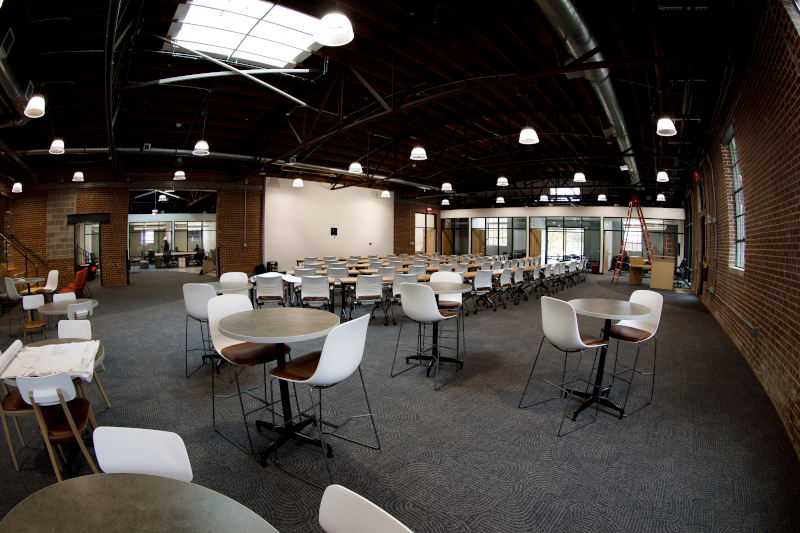UGA’s Spring Street/Innovation Hub project recently won an award for Outstanding Adaptive Reuse of a Historic Building by Historic Athens. It was presented during the 52nd annual Historic Athens Preservation Awards, held virtually June 7.
“Receiving this recognition from Historic Athens is especially meaningful and greatly appreciated as the adaptive reuse journey has been transformational and exciting – especially locating the historic spring access hatch under a layer of concrete and celebrating the spring with informative displays and a new video,” said Gwynne Darden, associate vice president for facilities planning.
According to Historic Athens, the category recognizes the successful adaptive reuse of a historic building for a new purpose. Projects in this category are judged on the basis of sensitivity to the building’s character-defining features and architectural integrity, innovative design solutions and impact on the local community.
“The success of this project was the result of a broad collaborative effort utilizing the expertise within UGA’s Office of University Architects working with consulting architecture firm Lord Aeck Sargent based in Atlanta and construction management firm Sheridan Construction out of Macon. Innovation District representatives Kyle Tschepikow and Ian Biggs provided critical guidance on how the programmed space needed to function,” said Scott Messer, director of historic preservation in the Office of University Architects.
The facility was built in the 1940s by the Cofer Seed Company as a processing plant and warehouse. UGA purchased it in 1968, and it housed the Central Duplicating Service for several decades. The renovations include a new roof with rebuilt skylights, a newly designated main entry on the south side with a canopy, a new parking lot accessible through a new entry and new landscaping.
“In this building, we help university faculty convert cutting edge technologies that are the result of many years of research into groundbreaking products, whether new drugs or vaccines, novel devices or engineering solutions, or even breakthrough digital technologies or artificial intelligence models, and the refurbished building is a tremendous backdrop to all of our activities,” said Biggs, director of Innovation Gateway startups and Innovation District planning. “The interior is visually arresting and very different from the rest of campus, is never intrusive in all of our activities, and functions well with all of the latest technology we use in our programs. It is a great building to work in and bring people into from both on campus and from outside the university.”
“Although the renovation of this building represents a radical reinvention of its use while preserving the historical facade of a bygone era, it has great historical significance as the site of the town spring essential to the founding of both the university and the town of Athens in their current location. Although the spring was hidden from sight long ago by the construction of the buildings on top of it, the water has never ceased its flow through the bedrock below, continuing to recharge the watershed as it makes its way downhill to the North Oconee River,” Messer said.
Representatives from the project shared more details about it in a conversation and Q&A with Historic Athens on June 14. To learn more, visit https://www.historicathens.com/preservationawards.
